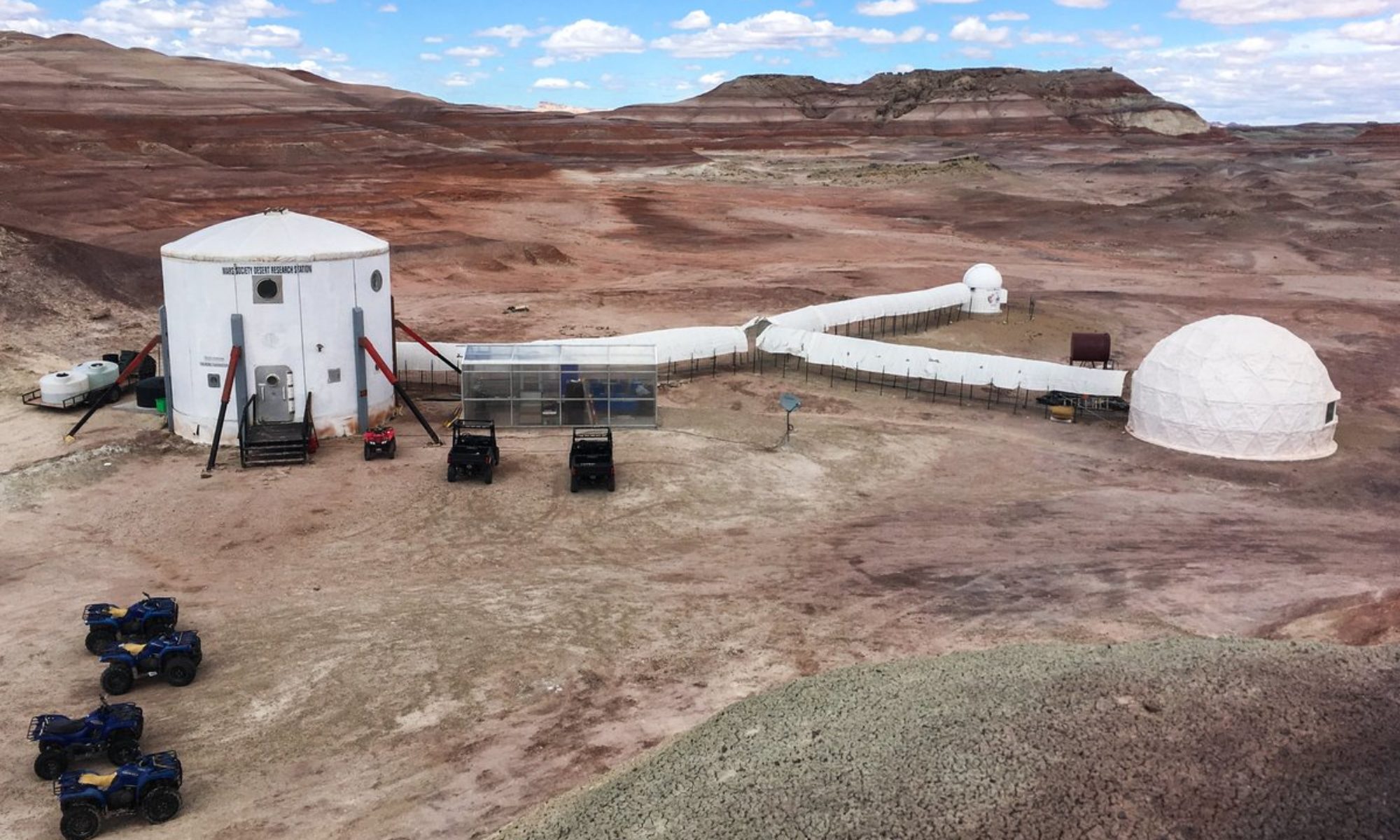This morning’s EVA (Extra Vehicular Activity) was a bit of a special one. Four of our crew members exited the vault, armed with a camera and a drone, and entered the 4×4 electrical rovers. They drove them south and stopped a bit further than the formation known as Zubrin’s Head. There, they exited the vehicles and walked west, towards the base of a single, conical, towering red mountain. At around 100m (300ft), it stood out as the tallest rock formation of the area, and they were ready to climb it. Despite sharply inclined slopes on either side, and protruding rocks near the top, the team was keen on making it to the top. With the drone, they circled the mountain, and determined an optimal path that went around the back side. On they went. This wasn’t the worst climb any of them had seen, but with the heavy space-suits on their backs, restricted vision, lack of water and limited supply of oxygen, it sure felt like one of the bad ones. Despite the difficulties, after half an hour of huff ‘n puff they finally reached the top, from which they could see the whole valley: snowy mountains far in the south, the Skyline Rim in the west, and the Martian plains stretching all the way to the horizon in the north, well past the MDRS and the area we have had the luck to explore these past two weeks.
This was their last EVA. On Saturday, they will embark on the shuttle which will take them away from this red land, away from the dry sand, the storms and the burning sun, and take them back home, back to Earth. Seeing, from above, the area they have spent these last two weeks in was a touching moment for them, and they felt the incoming goodbyes.
Back at base though, there were still things to do before departure. For starters, today was Michael’s birthday, and the whole team celebrated with birthday cake, board games and a custom-made paper tiara for Michael. The rest of the day was devoted to finishing up our experiments, and slowly beginning to clean up the base before the incoming crew gets here on Saturday. Indeed, there is only one day left for us here. And we’re trying to enjoy it as much as we can!










You must be logged in to post a comment.